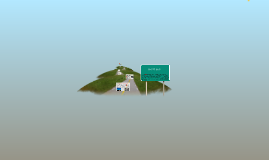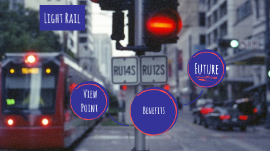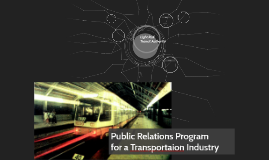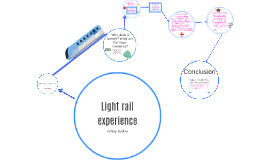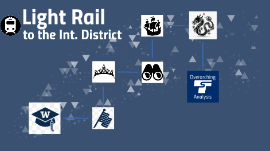Light Rail
Transcript: Light Rail Before my first week at the University of Houston, I thought about how I was going to get to campus and how long it was going to take. 45 minutes. Driving. And that was just without traffic. I had never used public transportation before, so I did not know what to expect from it. But it beat driving, that is for sure. View Point That is one of the main reasons I take the light rail today. It is convenient for many students to take the light rail to get to campus and back home, that is why so many students use it. But it is way more than just the students; tourists, employees, and people from the neighboring communities use it for their benefit as well. As a light rail user, I know that the majority of people I see are from the communities the light rail passes through going north from Central Station. Communities near Moody Park or Lindale. But you will rarely ever find someone that lives in the communities going down south. Why? Because the majority are upper class. Unlike the north side where the majority are lower class. And you will never see an upper class person on the light rail because they own cars or have the money to take ubers. Benefits So why is the light rail built through these locations? I personally believe it is because of money. Money from tourists who want to explore museums or want to explore downtown without spending money on parking. Money from patients who need to go to the hospital for medical reasons. Money from employees that are going to work. For example, lets say there is a person who lives in Lindale, does not own a car, and works in the medical center. How will they make it to work? Using the most convenient option they have, the light rail. And the employee is benefiting from it, but someone else is too. The employer AKA the upper class. As my group and I were traveling down south, we found so many businesses, attractions, restaurants. Places where you go spend some money for fun. There were not many places where children could go and play, especially for free. Hermann Park was the only place we could find. Everything else was enclosed by fences. But who wants to travel 45 minutes to get to the park? I know I would not. Since the majority of people are upper class, you will rarely find grocery stores or retail around that area. But if you go up north you will. That is mainly because, again, money. People live in communities that need all these basic needs. Even people who live in Third Ward use the light rail to get these needs because they are not available in their communities. And, of course, the upper class profits from them. As a future educator, I would want my students to come to school every day. Whether they get dropped off from a car, go on the school bus, or take the Metro. I heard a mom, a couple weeks ago on the light rail, telling her son that he had to learn how to get on the train on his own so he could get groceries for his family. And it is crazy to think about that. How safe is it for children to be riding on the train by themselves? Future Goal 1 I understand that sometimes it is necessary for children to get on the light rail to go to school. And not just schools - stores to buy food, school supplies and clothes. It is convenient for them. The only problem I have with the light rail is that it does not take them to a specific place, they have to walk sometimes to get there. Especially if they stay after school and it starts to become dark out, it is not safe to be out there alone. It is not even that safe during the day. I want my students to come to school every day and I want them to feel safe and ready to learn. GOAL 2 Photos by (Michael Duke) MichaelDukePhoto.com






